 |
| The X100S is my daily companion - even in bad weather there are scenes to capture |
But now the question for me and countless other classic X100 photographers was: Should I upgrade to the X100S?
Fujifilm introduced the revolutionary hybrid viewfinder with the X100 and gave the camera an external control layout of a classic film camera with aperture, shutter time and exposure compensation that can be controlled blindfolded with your finger tips.
But the X100 was not without flaws. While the image quality was stunningly wonderful even in Firmware 1.0, some of the ergonomics were... hmmm... let's say "challenging".
The original FW was lacking some streamlining in the menu and the minimum focus distance before having to switch to Macro mode was almost a deal breaker for me. Especially since it requited the photographer to push buttons 3 times before the Macro mode was activated or deactivated.
But most of these issues were fixed with continuous FW updates and the AF plus MF quality and speed was improved over time, too.
 |
| I'm already owning the X-Pro 1 and classic X100 - so is it worth buying the X100S? |
So why should I upgrade if the X100 is a good camera with the current FW? Well, because the X100s is simply better at everything!
There were certain things that Fuji was not able to fix in FW on the classic X100 as they were hardware related. The X100 and the X100S exterior are almost identical but the trained X100 photographer will happily notice the subtle but important changes that Fuji made.
The first thing that I appreciate is the physically raised "menu" and "OK" button. You won't have to operate this important button with your fingernails any more. Secondly, the 3 position focus mode slider now has the most used modes at the easy to slide to top and bottom position (Manual focus and AF-S standard mode) while the least used mode for me (AF-C continuous that can only be used with center focus point) now sits at the fiddly middle position (where formerly the most used AF-S was placed). The AF-Point selection and Drive buttons also swapped places. This enables you to move the AF-Point with one finger while staying glued to the viewfinder. This fantastic improvement was also introduced in the 2.05 X-Pro 1 FW (1.06 on X-E1) update via Fn button.
Lastly, the RAW button turned into the Q-Menu (Quick menu overview) button that is known and loved from the X-Pro 1 / X-E1and X10 but did not make it to the original X100, yet.
Just these ergonomic changes could be reason enough for the enthusiast X100 photographer to upgrade. But wait, there is more! Fuji lists 70 improvements that have been implemented in comparison to the previous version of the X100. OK, let's make it 69 as I find the mere attachment of the "S" badge not to be a real usability enhancement ;)
I will not go through the whole list of remaining improvements but rather tell you what I find extremely helpful from a daily usability point of view:
The single biggest improvement for me is the reduction of the minimum focus distance before having to switch to Macro mode. It has been reduced by 40% down to 50cm (20in) from 80cm (31in) on the previous version. I was constantly in the close range for portraits and having to switch to Macro was annoying and slowed down the AF locking process considerably.
 |
| The X100S has an improved AF close focus distance before having to switch to Macro mode - high five for that! |
Next on the list to mention is the improved AF and MF speed. The contrast AF now gets supported by phase detection pixel on the sensor to speed up the AF in certain well lit situations. And when the phase detection pixel take control the AF locks very, very fast. If the contrast detection takes over, the AF speed feels about as fast as the AF speed on the classic X100 with current FW.
So how can one make the phase detection pixel to always be in charge? Well, Fuji claims that you will need a decent amount of light. Then you need to use the focus points around the center as these PD pixel are only covering 40% of the sensor around the center.
I did as Fuji told me, but I still find it very hard to control if PD or CD AF will be used to lock focus. Even if I aim the focus point at the same subject and try to lock AF repeatedly with half pressed shutter, it will sometimes pump (CD AF) and sometimes be instant (PD AF) to lock focus. This and an improved AF lock rate in backlit situations are two of the few areas where I hope for improvements in future FW updates. When you have a blazing fast PD AF it should be used as often as possible. But aside from this wish I should add that even right now this is the fastest and most reliable AF of the current APS-C size sensor Fuji X-Cameras.
And if you struggle with any of your Fuji X cameras AF, read this article that I wrote about maximizing your AF results with Fuji X cameras.
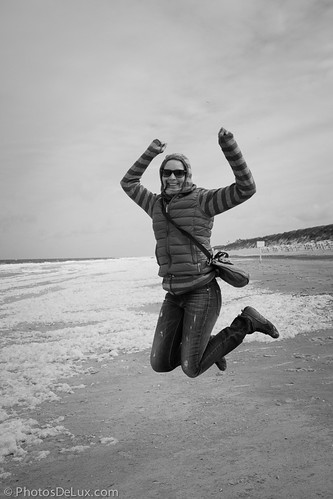 |
| The improved X100S AF in action |
And thanks to a higher resolution EVF, focus peaking and the now ambient light independent manual focus system, this is currently also the best manual focus Fuji X-Camera (until the FW 3.0 update for the X-Pro 1 and X-E1 on July 24, 2013 anyway).
Operating Speed:
The X100S also operates faster than the classic X100. There is no noticeable shutter lag and switching settings in menu is instant. If maximum operating speed is important to you, then switch off all energy saving- and switch on all performance improving features. What also helps is when you use the fastest UHS-I SDHC cards. I use the 16GB SanDisk Extreme 95MB/s and I'm very happy with the speed they write my RAW + JPG files.
 |
| No noticeable shutter lag = perfectly timed captures |
Power consumption and batteries:
But with all energy saving turned off, I highly recommend that you buy at least one, or better yet, two spare batteries for your X100S. There have been situations where I got less than 350 images out of one charge with lots of reviewing and constant EVF use. And since my first experiences with two off brand batteries were so negative (they would not physically fit into the X100 battery compartment without getting stuck) I now only buy the original Fuji batteries.
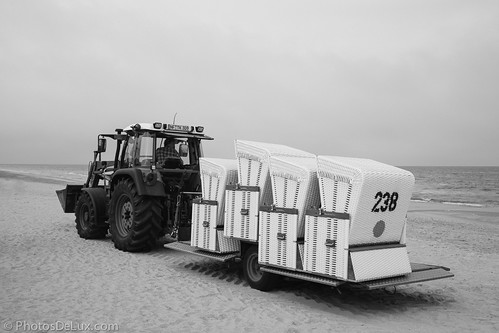 |
| Just a visual reminder to take extra batteries with you for long photo walks with your X100S ;-) |
Charging:
Talking about batteries, the charger that comes with the X100S now doesn't have a loose adapter part (to hold the battery in place) any more. After loosing this part on my X100 charger on a trip, I glued the replacement part permanently to the charger. Now Fuji attached this part permanently.
But what also needed improving was the charging time for empty batteries. An empty X100(S) battery will need 3.5 to 4 hours to charge completely! And unfortunately this has not changed with the X100S charger :-(
This becomes really annoying when you are on a photo trip and come back to the hotel at night with 2-3 empty batteries. I end up setting my alarm to wake up after 4 hours to switch batteries in the charger, so that I have at least 2 fully charged batteries for the next day. If anyone knows a faster charger for the X100 battery, please let me know! And no, a second charger is not an option. Traveling light is one of the reasons why I switched from DSLR to mirrorless for the majority of my work.
 |
| Raw street photography |
Image Quality
The biggest change concerning the image quality between the X100 and the X100S is the switch from a 12 MPix bayer array sensor to the 16 MPix X-Trans II sensor (this is an updated version of the X-Pro 1 & X-E1 X-Trans sensor.)
The original X100 certainly has an outstanding image quality and color rendition and still performs incredibly well today. But the extra 4 MPix and new sensor technology of the X100S are nice for extra cropping and ISO headroom. From looking at my images EXIF data I would say that the X100S has a 1 stop ISO noise advantage over the X100. This becomes quite visible at ISO 3200 and 6400. But I also have the feeling that the ISO sensitivity on the X100S is about 1/2 of a f-stop less sensitive. This leads to slightly longer shutter times at equal exposure situations. But over all there is still a bit of a gain in favor of the X100S and the "noise" of the X-Trans sensor looks very film grain like.
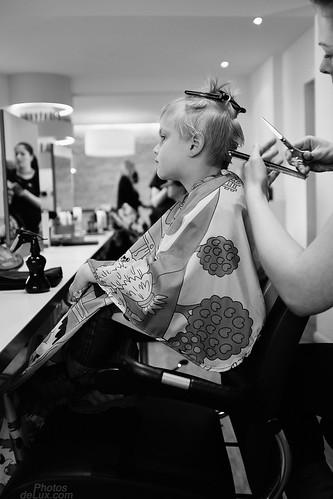 |
| I'm 100% satisfied with image and detail quality that I get from the X100S! |
The JPG color rendition is also a bit different between these two generations of X100 cameras. I have noticed this when I first started using the X-Pro 1 with the X-Trans sensor compared to the X10 and X100. This difference is mostly visible in yellow and green parts of the image. The X10 and X100 are very similar to each other while the X-Pro1 and X100S are more of a match to each other. Yet, if you don't do a direct A-B comparison, you will not notice this subtle difference in tonal rendition. And the out of camera JPG image look is beautiful from both sensors!
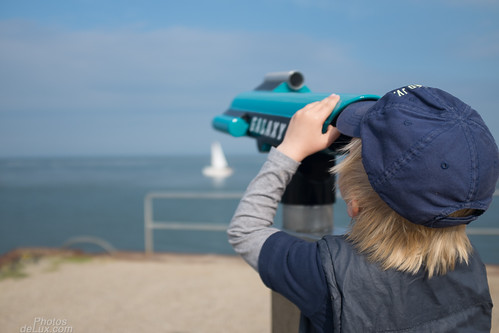 |
| Natural skin colors and an analog film like look are one of the strength of Fuji X cameras |
If you enjoy to give your photos a look of other analog film types than what the Fuji X-Cameras already offer internally, take a look at the products from VSCO. They offer their 3 film packs for LR and Aperture now with support for Fuji X100, X100s, X-E1 and X-Pro 1 Raw files.
 |
| A little VSCO Film adjustment in LightRoom gave the image this look |
The lens picks up some flare and this is identical to the lens on the original X100. Hence, I would buy the lens hood with adapter for two reasons:
1. To control flare.
2. To have a filter thread for the use of filter or simply to plug in a standard lens cap (49mm filter and lens cap for the adapter without the lens hood and a 52mm lens cap for use with the lens hood attached - you can see this on the second photo from the top). And do get the lens caps with the pinch release in the middle of the cap!
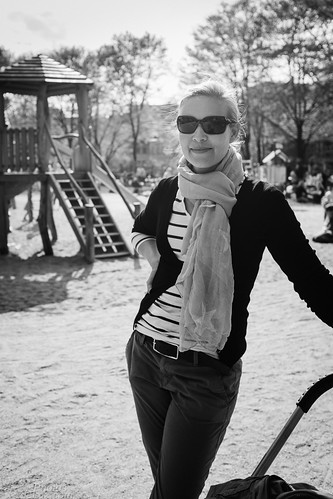 |
| The lens hood saved me from flare in this backlit image |
My settings:
The X100S has turned into my every day take along camera. It is my street, portrait and city/landscape tool. And, I use it 95% of the time as a B&W camera! I set the camera to record JPG + RAW and set the JPG to be captured in BW + Red Filter. This way the EVF and the review image in the EVF & OVF will show a B&W image which is closest to the way I would process it. The RAW file still contains the color information and will be rendered as a color image in my LightRoom collection, next to the B&W JPG image.
I find that seeing a scene in B&W is less distracting and lets me focus more intensely on the subject and situation of the scene.
 |
| Lens distortion is well controlled in JPG images and easily adjusted on RAW with a +5 setting in LightRoom |
These are my preferred every day settings when I'm out with the X100S:
- Fn = ND Filter (heavily used in bright conditions to overcome the f2 & 1/1000s limit)
- RAW + JPG
- ISO: Auto 6400 at 1/100s (I'd rather take a bit more noise than motion blur)
- Film simulation: B-R (B&W Red Filter)
- Sharpness: +1
- Highlight Tone: 0
- Shadow Tone: +1
- Noise Reduction: -2
- MF Assist: Max
- High Performance Mode: On
- Power Saving: Off
- Review Time: 0.5 S
I'd say that even with a fixed 35mm equivalent field of view (to a 35mm film camera) the Fuji X100 and X100S cameras are very versatile:
Reportage photography:
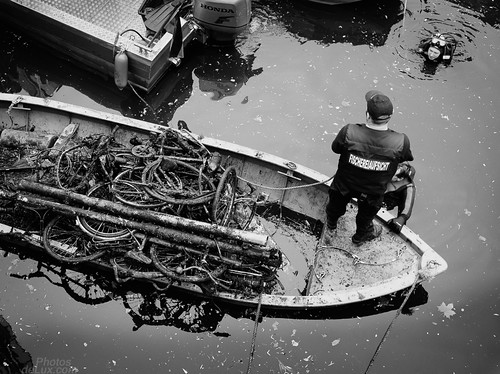 |
| Reportage photography X100S |
Portrait photography:
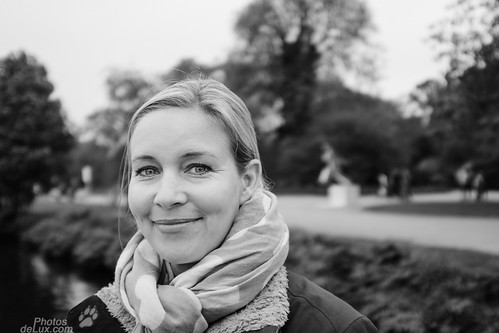 |
| Portrait photography with X100S |
Architecture photography:
 |
| Architecture photography with X100S |
Landscape photography (with VSCO Filmpack Filter applied):
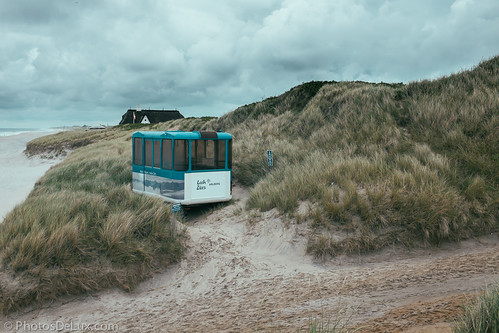 |
| Landscape photography with VSCO Filmpack Filter applied |
My Résumé:
The original X100 was a revolutionary camera with great image quality and a few quirks, but most of them were taken care of in FW updates. Still, after using the original X100 for 2 years my first 24h with the X100S convinced me that this is the camera I have been waiting for! And at first I didn't even want to upgrade as the image quality of the X100 is still very, very good.
But it seems like all of my suggestions to improve the usability of the original X100 were implemented. Someone at Fuji must be either reading my mind or reading my blog and forum posts ;-) The X100S is truly a worthy successor with improvements in almost all aspects - making my daily work with this camera a pleasure.
When I'm out with the X100S I don't have to think about how to operate the camera. I can simply concentrate on framing my shot and evaluating the scene. I operate the aperture, shutter time and exposure compensation directly on the dedicated wheels without taking my eye off the viewfinder. And I'm get an instant 0.5 second quick review image to check if I got the shot the way I intended it. If the X100S didn't already exist one would have to invent it! :-)
I think that if Henri Cartier Bresson would still be alive and in the market for a mirrorless camera, he would probably look very closely at the Fujifilm X100S - it's that good of a street photography tool.
 |
| Add translates to: "How to take good photos" |
To finally answer the question if the X100s is worth the upgrade from the X100? After using this camera daily for more than 3 month with roughly 5000 photos taken, I can answer this question with a big "YES!" for myself. So if you are still in doubt if this upgrade is worth it for you, go to your camera store and give it a try! This camera might also be an alternative for people who are interested in the Fujinon XF 23mm f1.4 lens for their X-Pro 1 or X-E1. Besides that the XF 23mm f1.4 lens is not released at the time I'm writing this, the X100S can also be seen as a 23mm f2 lens with a fine camera attached. And it would make a nice back up camera, too :)
And it is also worth a second look for people who had operating issues with the classic X100.
But I must also add that this does not make the classic X100 an obsolete camera. If you don't want to spend the new price on a X100S and don't mind the minor operating issues that I had with the classic X100 (mainly close focus distance before having to switch to Macro, MF in low light and two handed AF point selection) it is still a camera with wonderful image quality at a very interesting used price. And take a look at the Fuji X photographers who still use the original X100 and the stunning images that they create with it. Only the difference in image quality from the new sensor would not have been my reason to upgrade...
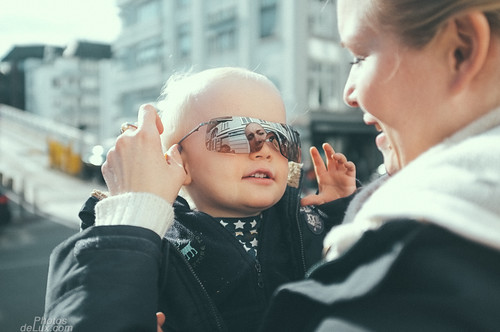 |
| One of my last photos taken with the classic Fuji X100 |
If you have any further questions leave a comment below, Twitter me @HamburgCam or visit my Homepage at www.MarcoLarousse.com
And if you liked my post I am always happy if you spread the word and retweet, like or google +1 it :-)


Many thanks for an excellent review. For most of us, though, whether or not the upgrade from x100 to x100s is "worth it" depends on exactly what it would cost. I'd be interested in hearing your readers' experiences in trading in their x100 for the new model - what kind of trade-in allowance did you get from your dealer, or if you sold the x100 privately, how did you price it? (eBay seems to be all over the place, and i don't quite trust many of the listings anyway.)
ReplyDeleteGood idea!
DeleteIf any reader wants to share their trade in or sell price/experience, just add it to the comments.
A great post - thank you for sharing your thoughts on this wonderful camera. I bought my X100 last October and love it for travelling light when I don't want to lug my Nikon gear around with me. I only took the X100 with me on business trips to Shanghai and Morocco and while I was apprehensive leaving the flexibility of my D800s at home, the reality was quite liberating.
ReplyDeleteLast month I obtained an X100S on a three month test and I'm doing a back to back comparison to see if it is worth upgrading. One month in and the jury is still out on that one. Yes the improvements are there and are very welcome but I'm still not sure they are worth the extra £400 that an upgrade would cost me.
The X100 set the bar very high (especially now it has FW 1.30). My biggest issue is my X100 is the Black Limited Edition and I love the black finish. There is no black 'S' and that is a real shame as Fuji launched the XE1 in both silver and black.
I have the X100S for another two months and I will continue to review the camera on my blog at http://macleancomms.blogspot.co.uk/
Thanks again for sharing your thoughts on the X100S, I'm glad the upgrade worked for you.
Thank you far sharing your thoughts. And I enjoyed looking at your photos on your blog. I especially like the landscape images :)
DeleteAll the usability and speed improvements aside, if you love the black finish of your X100 Limited Edition, you can only wait and hope that Fuji will make a X100S in black, too. There certainly is a considerable group of people who prefer the black version.
For me the X100S in silver and X-Pro 1 in black is convenient. This way they are easier to tell apart when I quickly grab a camera before leaving my house ;-)
Thank you for a wonderful comparison review. If you are interested in a good fast charger for the Fuji NP-95 batteries I recommend the Digipower model TC-56F, which has an integrated plug (no wires) and a continous-read LCD screen which shows the exact state of charging at any given time.
ReplyDeleteThanky you for this tip!
DeleteBut does the charger actually charge the NP-95 batteries faster than the original Fuji charger?
Thank you for the great review and photos. Your experience is similar to mine. I fell in love with the X100 based on looks and Fuji hype, was one of the first pre-orders in Canada and got one in the first shipment after the tsunami. Used it every day and abandoned my Canon gear and became a Fuji fanatic with the xPro 1 and all the lenses (including a fisheye.
ReplyDeleteI still love the x100 but since picking up the X100s I have not used the X100 at all.
I was pleased that the processing speed of the CPU was upgraded. Burst mode is now possible. With the X100 if you shot 5fps it would freeze up. It is faster than the X Pro 1 and I suppose that the X Pro 2 will solve that.
When I told my son that with the X100 I would never ever need to buy another camera! He smiled at me in a way I knew he did not believe a single word.
Thank you for sharing this! Looks like we went similar paths switching from Canon to Fuji. Only difference is, I never claimed that the X100 would be my last camera I ever buy ;-)
DeleteThere are many things to like about this camera but as I shoot a lot in low light in cities at night the ISO performance was the deal clincher. I am in the process of curating images from the X100s and X-Pro1 for an exhibition and I am really impressed at how large I can print even iso6400 images. There is of course some loss in fine detail, but the images still work.
ReplyDeleteI agree! The ISO performance is good and the X100S shows less banding in critical situations compared to the classic X100.
DeleteI wish you success with your exhibition :-)
Canon is going to hate these cameras. :)
ReplyDeleteI've enjoyed your review. I bought my X100 on November 2011 as a backup camera for my EOS-5D, I used to carry a 20D as a backup but I wanted something lighter (I tried a sigma SD2 but I didn't like it).
Last summer I did the silk road and I found myself using much more the X100 than the 5D... at the end of the trip it was 75% X100 - 25 % 5D... on my next trip to Lisbon I left the 5D at home.
I find the X100 quality outstanding and I "feel" easier to carry around and take pictures of people, a reflex is more intimidating imho.
I need the 5d for wide-angle pictures, but if I get a 75%-25% ratio again I'll think about buying a X-Pro, a 14mm and abandon the 5D.
Unless you need your camera for action photography or require a very advanced E-TTL strobe system from your camera manufacturer, the Fuji should be suitable for most situations. The XF 14mm is a fantastic lens and the "XF 10-24mm F4 R OIS" should be in stores before the end of the year. That could also be an interesting landscape / architecture lens.
DeleteJust in the off chance that a Fuji staff member reads this. I am also waiting until a black version of the X100S comes to market. Finally a digital equivalent to my beloved black Contax T3.
ReplyDeleteI have heard this request quite a few times. How about it Fuji? ;)
DeleteYes would be much better in black
Deletepaint it black to make it look bigger?
DeleteI may be the odd one out here. I was one of the first to jump on board a X100s here in Western Australia, when they were available early this year. I did a lot of testing and comparing images between the old and the new X100. I came to the conclusion that other than a few improvements in handling, the sensor (in my opinion), was a step backwards.
ReplyDeleteI was consistently getting plastic looking images with skin tones on the S and no matter what I did in the new version of L/R (they said they had fixed the problem), it would not go away. I had somehow lost that magic, 3 dimensional look that my old X100 had. I sold off the X100s and am very happy again to be using the original X100.
I can confidently say - after many thousands of pictures of comparison - that unless you really need the slightly faster speed of the X100s, 6 frames a second where the camera won't lock up (like the X100 does), and a nicer more clear EVF - I certainly would not bother swapping over and paying the extra money on a X100s.
I travel and photograph Asia for 6 months of every year, so my D700 and my X100 are the only two cameras/lenses that I take. These are my bread and butter, so if the X100 was not good enough, I certainly would have sold it by now. I can confidently say after trialing the X100s, I am more than happy to be planning my upcoming trip to Myanmar and Laos - with my X100 in hand.
Philip
philipsuttonphotography.com
Great that you still enjoy shooting with the X100! Like I wrote in my review, the IQ of the classic X100 is still very good. And if you have gotten used to the quirks that still exist, there is really no reason to upgrade.
DeleteBut I do not see this "plastic looking" images that you described. At least not in the settings that I use. I do suggest to shoot the X100S at "NR -2" setting as I find the NR to be a bit too agressive. And maybe set the shadows and highlights to -1 each to get closer to the original X100 look, if you ever get to try the X100S again.
But since you decided on staying with the X100 for now, enjoy and take great pictures! :)
Thank you Philip for your comments.
ReplyDeleteI own and use the x100. The many x100s samples that I have previewed have Not convinced me that it is a better camera. I too found the images fake and plastic compared to my x100.
Also the camera has been beset wirh QC problems and is currently Not available in the States.
I will not be trading in my x100.
Mike P
Mike, have you tried to change the picture settings on the X100S like I described in my reply to Philip? The X-Trans sensor does interprete the images a bit differently from the classic X100. But with some minor adjustments you can get them to look very close to each other.
DeleteHi, the picture settings does not remedy the plastic smearing of skin tones. You can check out some images here that I've sent in to Fujifilm:
Deletehttp://fredrikaverpil.tumblr.com/fujifilm
Excellent review! I'm wondering about what you wrote in this article " Fn = ND Filter (heavily used in bright conditions to overcome the f2 & 1/1000s limit)"
ReplyDeleteDoesn't X100S have 1/4000s limit on its shutter speed. Did I miss something?
Yes, the X100S has a maximum shutter speed of 1/4000s but only at aperture f8 or higher. At f4 and higher you get 1/2000s and f2 & f2.8 you get only 1/1000s maximum shutter speed.
DeleteThis is due to the leaf shutter system that the camera uses and it can only reach the faster shutter times when the aperture opening is small enough.
The ND filter will allow you to shoot at 1/1000 in bright conditions without overexposing. And using the ND filter at f16 can give you long exposure results without having to bring an extra ND filter.
The advantage of the leaf shutter is that you can get flash sync times of 1/1000s and faster - even with larger strobes. That is a huge advantage when you want to overpower the sun in bright coditions :)
Care to link to the lens caps you're speaking of using with the hood?
ReplyDeleteI found it at Amazon. Just a quick search should lead plenty of results to choose from :)
DeleteI was about ready to trade in my X100 for the x100s, but then X100 V2 firmware appeared. Not having tried the X100s myself, have you observations on how close they are now in operation now?
ReplyDeleteAnyway, I hesitated in trading in, but now Fuji have some fantastic X-Pro 1 deals at the moment (in the UK). The X Pro 1, plus the 18mm is a fair bit less than the cost of the X100S, with Fuji also sending out another lens for free (I'm looking at the 35mm f1.4).
It's always tough to make those choices. The X100 is even closer now in AF speed to the X100S. I would not switch back to the X100 after using the X100S for so long and feeling very comfortable with it. But looking at the price difference the X100 is a bargain :)
DeleteMrGecko here. Just interested if you still think an upgrade would hold true given the current lineup of cameras and potential of a X200 in 2014. Still holding on to my classic X100
ReplyDeleteSo.... the camera can shoot 350 images with one battery. After a trip you have 3 empty batteries which you want to recharge for the next day...... I'm starting to believe you have other problems then empty batteries ;)....
ReplyDelete@HamburgCam please whera i find "- Review Time: 0.5 S" in setting?! thaks for you answer ;)
ReplyDeleteYou can find it in the main menu (with the wrench symbol) in section No. 2 under "Display Setup". It offers you to set the time for "Picture Review. Just set it to 0.5 sec. and you're done.
DeleteEnjoy! :)
Well, with current FW update (and even prior to this) I find the look of the original X100 as good as it gets for me. I have the black LE version and I was in the market for an upgrade/second camera, so toying with the idea of a new XP1. However, since that idea, along comes the TCL-X100 adapter lens. Now my thoughts have turned to another LE X100 with the TCL permanently attached, for less than the price of an X100S. For very little outlay I can have the benefit of two superb cameras, 1 with the 35mm equivalent lens and the other with the 50mm equivalent lens. And the upshot is that I also have a back-up camera to boot. The X100 is plenty good enough for me!
ReplyDeleteI already use the Fujifilm X100s camera. Yes it's a great camera with a Prime 23mm f/2 lens.
ReplyDeleteOops, comment lost. Anyway. I have an x100 and it seems to me that I'm alone in finding this. It the best image quality. Not quite sharp, not quite crisp. Is it me?
ReplyDeleteI set my original X100 to be a bit less contrasty to give it more of a film look. And that is how I like it. On my X100S in B&W mode I like the contrast to be harder and the images look very sharp.
DeleteSo you can set it to the way that suits your style best :)
Thanks for the excellent detailed review, I could only wish to take as wonderful pictures as you!
ReplyDelete